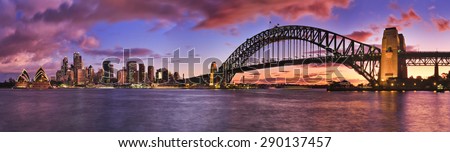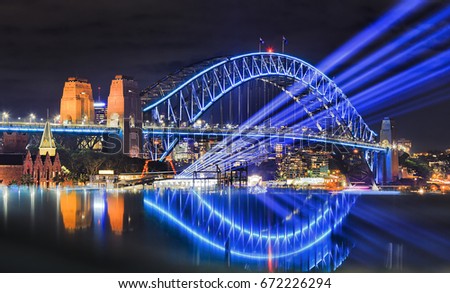Извините, без перевода.
1. Tell us about a time you've photographed a very famous landmark. How did you make sure you captured it in a fresh and new way? How did you avoid photographing it like everyone else? (NOTE: Please make sure the shoot you discuss is in your Shutterstock portfolio).
As I live in Sydney, the iconic landmark I would like to talk about is famous cityscape of Sydney. Which includes the Sydney Harbour bridge, opera house and CBD high-rises. https://www.shutterstock.com/image-photo/burning-bright-sunset-over-sydney-cbd-290137457
Thanks to the size and lengthy coastline of Sydney harbour, it gives plenty of options and good spots to photograph from. Which also presents one of the challenges – what is the best one? Naturally, all three elements of the cityline should be presented together in the best possible view to form strong and appealing outlook, appreciated by designers and customers.
Another important consideration – light and time of day. Nothing beats soft light of golden hour. With proper weather and interesting clouds this could result in remarkable results, especially when combined with artificial illumination of buildings and cities. Careful blending of natural and artificial light is crucial for decent outcomes.
And finally, capturing in wide panorama format gives a bit fresher perspective than conventional single image.
2. What tips would give to other photographers about photographing famous places? How can they take landmarks that have been photographed many times and make them their own?
Though here is no universal recipe, a number of basic rules could definitely help to get better results.
a) Research. Search the web, magazines, tourist booklets and travel guides, see what others have done, learn from their experience to know the landmark better in advance, even before you start your travel. This will allow you to plan for spots and angles of view, prepare your gear and focal length of lenses. Know what to expect so you’ll have more time to find something like this: https://www.shutterstock.com/image-photo/sydney-harbour-bridge-illuminated-during-vivid-672226294
b) Light. Use the best light of blue and golden hours. Besides lighting condition this also has advantage of less crowds and easier access to the best spots. The same place at 5am and 10am will look completely different. Additionally, famous landmarks may have highlighting artificial illumination which is the best observed during the blue hour. Be mindful, though, that some of them may not be illuminated at sunrise (like the Sydney Harbour bridge) or not even be accessible until opening hours (like Forbidden palace in Beijing).
c) Weather. Some landmarks are great only during clear skies, but some may benefit from interesting clouds or immediately after rain with puddles and reflection opportunities. And of cause some less frequent weather events, like a rainbow, a lightning, the Northern Lights or even the Moon could add uniqueness.
3. Where do you find inspiration for your photography?
Firstly, this is own ability to capture the scene in the best possible light, in both senses. If after the session, when reviewing the results I can say wow to some of my works – this is something which drives me further. Ability to see and experience the same place, the same feelings again and to get aesthetic satisfaction from something which I produced myself.
Secondly – it is appreciation of other people, either face to face or via social media platforms. When my works get likes and comments, people endorse what they see and start to follow – this definitely encourages to continue. Instagram, Facebook, Twitter, even here on Shutterstock - the way to look for such feedback and inspiration. Once in a professional conference I’ve seen my work used as the title photo for the event (another cityscape of Sydney by the way) – it was very strong and touching moment. Not even because I earned something from that sale, but because I’ve personally seen application and appreciation of my humble skills in a real life situation.
Another driver is opportunity. When travelling or just visiting interesting location, or even seeing some less frequent weather conditions in usual places with great light – capturing those moments and saving them for later is very appealing feeling.
Community influence. Seeing the works of others, observing ads and marketing materials in our daily lives gives ideas and pushes to do better, have your own work. There was a series of posters in Sydney trains promoting national parks around New South Wales, and some of those views inspired me to go places.
And finally – financial reward. Getting your best works accepted by shutter-stock, growing sales, being able to convert hard-earned money into the new photo gear or ability to travel without impacting my family budget – this is very inspiring moment for an enthusiast photographer like myself.
4. Please pick a photo from your Shutterstock portfolio to illustrate your response to the first question. This should be a photograph of the landmark you discuss in your answer. Please provide the following information:
A. What gear did you use for this photograph, including camera body and lens?
Canon 6D with Canon EF 17-40 mm F/4L USM and neutral density gradual filter (pretty cheap and ordinary). All mounted on an aluminium tripod. I also used wireless remote control.
B. What is the metadata for this photograph, including focal length, shutter speed, f number, and iso.
This is a series of 3 horizontal shots at 40mm later stitched into a panorama. ISO was 100, F/13, exposure for every shot about 6 sec. It varied for different images as left side of the scene was darker than the right side with setting sun. When there is enough light I usually lock F and ISO and shoot in aperture priority mode giving the scene the best possible sharpness, balancing between the sweet spot of my lens and depth of focus.


Комментариев нет:
Отправить комментарий